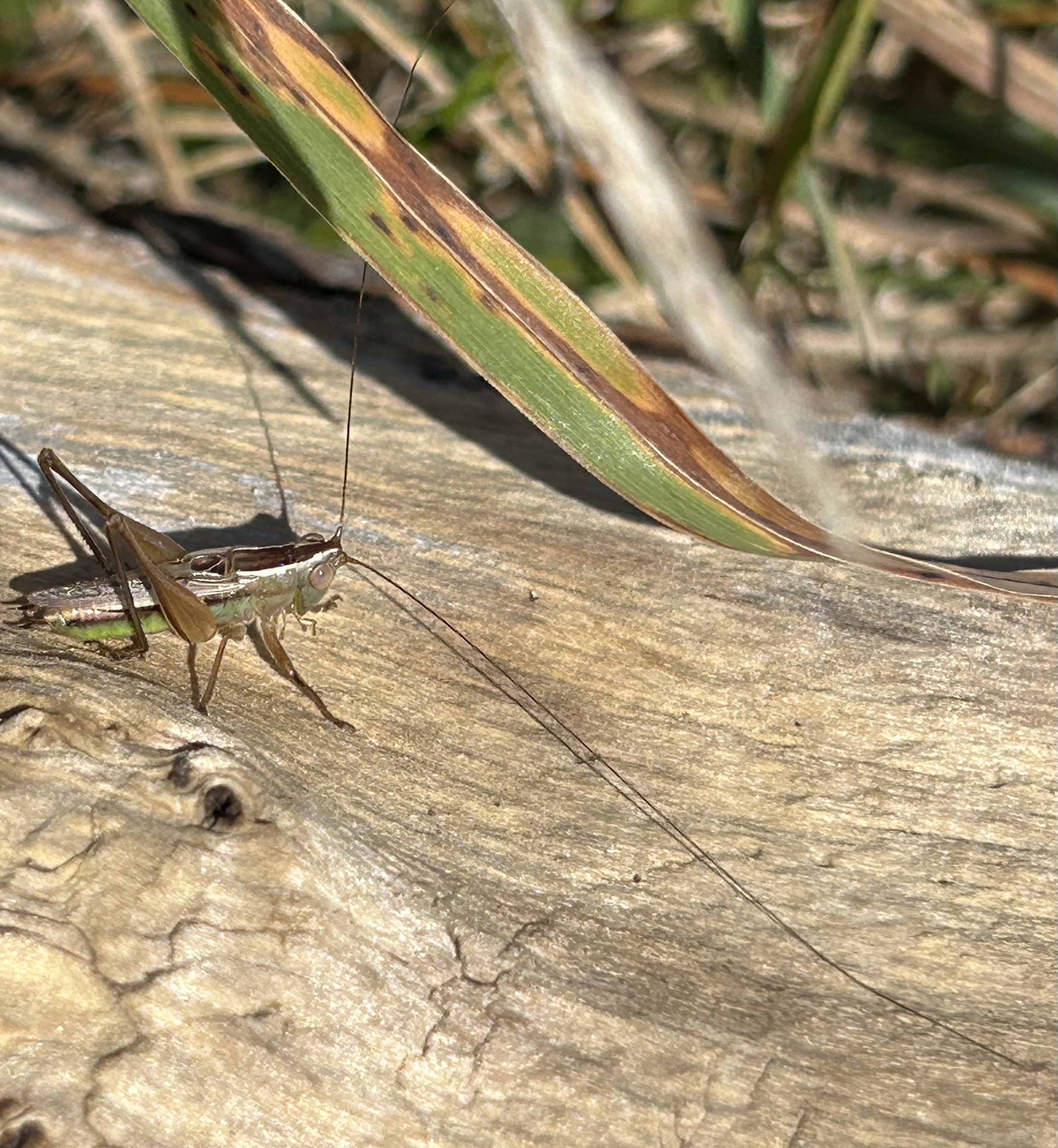What’s the difference? Grasshoppers, Cricket or Katydids
New Zealand Grasshopper Phaulacridium marginale
Some recent encounters with grasshoppers and katydids got me thinking about the differences between them, and with other invertebrates like crickets and locusts.
Investigating this turned out to be a lot more complex than I imagined.
Confusingly katydids can also be called bush crickets and I have also seen them referred to as long-horned grasshoppers, although they are neither crickets nor grasshoppers
Just when I thought I’d found things that were different or in common, I’d find there were always exceptions. For example, I read that some grasshoppers are flightless but some have wings.
The biggest surprise was to realise how closely wētā are related to crickets.
What do they have in common?
Grasshoppers, katydids and crickets are all in the Orthoptera order of insects, this order also includes locusts and wētā.
Most make noises - stridulations - some by rubbing wings together, some by rubbing their legs against their body.
Most but not all are vegetarian - they have chewing parts in their mouths.
They go through several stages of development in their lifecycles, for example some develop wings as they move from one stage to another. They also moult to discard their old exoskeleton as they grow.
How to tell them apart
The main difference between katydids and grasshoppers is the length of their antennae. See the pictures below.
Katydids
Katydids are named after the sound that an American katydid species makes
They often look like leaves
They have antennae as long as, or longer than, their body
Look at how long the antennae of this Whitish Meadow Katydid are - almost three times the length of its body.
A leaf-like Common Katydid
Grasshoppers
Grasshoppers have short, thick antennae
They can be different colours even when they are the same species
The antennae on this New Zealand Grasshopper are noticeably very short. Grasshoppers of the same species can be different colours - this is the same species as the brown grasshopper shown at the top of this post.
Another endemic grasshopper, Sigaus nitidus - an alpine grasshopper that is flightless and silent.
Other Related Species
Migratory Locust - locusts are most closely related to grasshoppers, they also have shorter antennae.
Black Field Cricket (not a native cricket). Like Wētā female crickets have an ovipositor - a pointy structure at their rear end - which they use to lay eggs.
More Information
A simple explanation about Australian Orthoptera, some of which are also found in New Zealand https://australian.museum/learn/animals/insects/grasshoppers-crickets-katydids-and-locusts-order-orthoptera/
A blog post about wētā https://www.gilliancandler.co.nz/discovernatureblog/2017/06/tree-weta-encounters-why-do-they-smell.html








